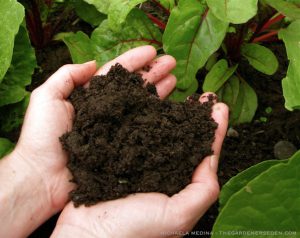In his book, Soil and Sacrament:A Spiritual Memoir of Food and Faith, Fred Bahnson says the verbs avad and shamar in Genesis 2:15 have been translated mistakenly as “till” and “keep”. This conclusion is based on the philological work of Old Testament scholar Ellen Davis (Duke Divinity School), who has explored how these words were used elsewhere in the Bible. She says, “avad really connotes service, the kind a subordinate would render to a master either divine or human, and shamar means to watch, keep, or preserve. Furthermore, “shamar carries legal connotations suggesting a binding contract.” Davis says also, “there are divinely established rules and constraints attached to our use of the soil, and it has always been so. Taken together then, these philological details give a depth to the kind of relationship that God first envisioned between the human creatures and the soil from which they were taken. That is, the land is not just a natural resource; it is a living entity worthy of our deference and servitude, our watchfulness, and our best attempts at preservation.”
In that regard humans have significantly dropped the ball. Scientists have determined that humans have have lost 30 to 75% of the original organic carbon pool in soil by using farming practices that have led to degradation in quality and decreased productivity. Furthermore, about 22% of the carbon originally in soil is now in the atmosphere as carbon dioxide and methane, and because of the greenhouse effect, these gases are causing the planet to warm.
The good news is that conservation agricultural practices including supplementation with compost can restore carbon back into the soil. Around the world there is a growing movement to study, understand, and put into practice more natural and resilient ways to do just that, to improve crop yields, and to increase food security (Lal et al., 2007). A review of the use of organic supplements to cropland indicated that application of long-lasting organic amendments increased organic carbon by up to 90% versus unfertilized soil, and up to 100% versus chemical fertilizer treatments. Moreover, regular addition of organic residues, particularly composted ones, increased soil physical fertility. Crop yields have been increased by up to 250% after long-term applications of high rates of municipal solid waste compost (Diacono and Montemurro, 2010). And, in a six year field experiment studying the effect of farm compost amendment on a crop rotation of potato, fodder beet, forage maize, and Brussels sprouts, farm compost increased soil quality and crop yields demonstrating a causal relationship between soil quality and crop production (D’Hose et al., 2014).
With about 43 million food insecure people in the USA alone, now is the time for us to take heed of our covenant with God by restoring, nurturing, and preserving the good soil to grow food for the hungry.

